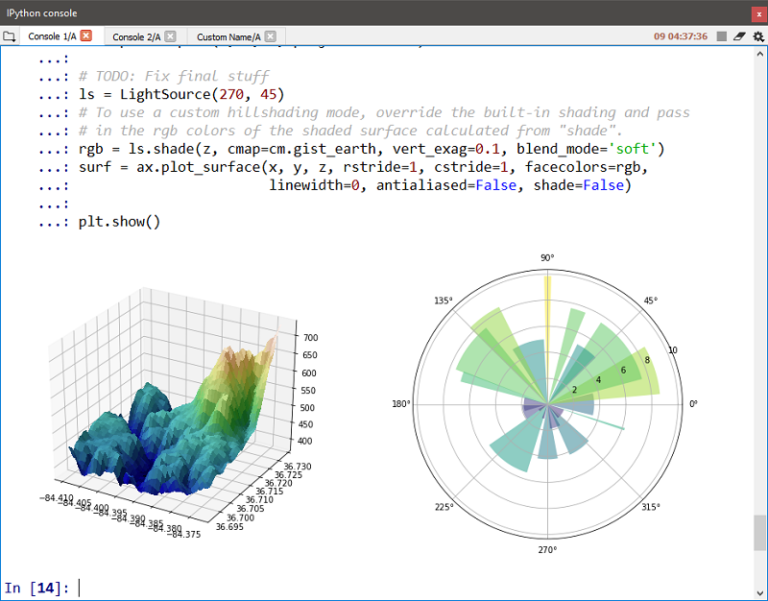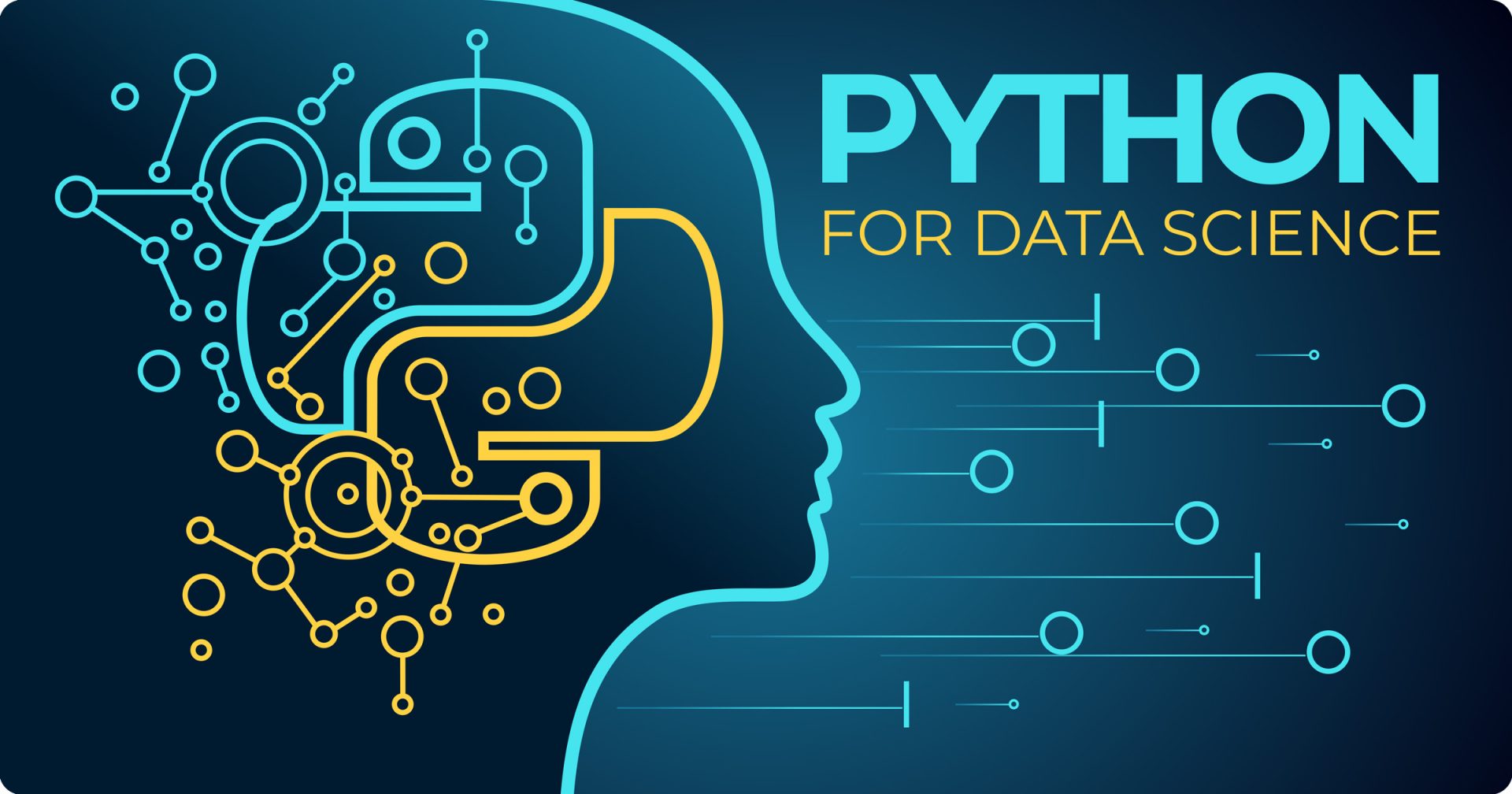Top 10 Reasons to Learn Python for Data Science
Top 10 Reasons to Learn Python for Data Science
If you don’t know where to start learning data science, read this article!
Data Science is a vast field with different ways to enter depending on where and how you want to start learning it. I started learning the basics of data science in a language called R and used that language until I ran into one of the many limitations that made it unreasonable to continue using it. According to my experience, in the battle between Python and R, Python is the winner. Learning Python is one of the fastest, easiest, and most fun ways to get into data science.
Data science is a highly valued skill, with a high average salary and job satisfaction. However, the number of experts and skilled people in this field exceeds the companies demand.
I recommend Python for many reasons for entering the endless world of data science. First, many FAANG-adjacent companies use this language. Secondly, this language is adaptable and fluent, and finally, it is easy for beginner programmers to learn it and to gain expertise in it for professional programmers.
Although Python is considered a universal and general language, in this note, we have brought you ten solid reasons to learn Python in data science and intend to explain what Python is in data science.
Top 10 Reasons to Learn Python for Data Science
1. Easy to learn
Learning to code can seem intimidating, especially for beginners. But it is an exception to this general rule. The syntax of this programming language is very simple, and therefore it can be easily learned. This statement is especially true compared to more complex languages such as C, C++, and Java. Learning Python is a great option for data science professionals.
This language is so simple that the Digital Marketing and Coding Academy Next Academy considers it a great language to teach children. Many free or cheap resources are also available for those who want to start programming.
If you want to step into the world of data science, Python is an easy and ideal language for you; A language that is learned very quickly and without difficulty. Learning data science with Python is the best option for beginners.
2. Simplicity in reading the codes
As we said before, Python has a simple syntax and reflects the English language. Therefore, whatever is written in this programming language, will be understandable to many people, Even if they do not master it.
This is one of the reasons for the simplicity of the Python language; while learning, you can read the code written by others and understand what they tried to do. If you are planning to enter the world of data science, you should pay attention to the readability of the language you choose as a key component.
In this way, it is necessary to read many codes and share them with colleagues or other people on the Internet for debugging. Python makes this easy.
3. Popularity of Python
Many people start with Python to start programming. This language is one of the most widely used in data science and other fields. According to the TIOBE 2020 index, Python is the third most used language in the world and is one of the most popular in data science in particular, ahead of my old favorite, R.
As I mentioned earlier, many companies use this language to frame and advance their projects. For example, Google built the Tensorflow platform based on Python. Facebook and Netflix also rely on this language more than ever to advance their work in data science.
If you are interested in data science and intend to progress in this way, you must have a major in Python. Fortunately, learning this language is very enjoyable and easy.
4. Large community of Pythonists
When I heard the name Pythonists (people who code in Python) for the first time, I thought, wow, it has a great name. But this beautiful name is not the only positive point of this language. By learning Python, you will become a member of a large community of people who are fluent in this language, and you can share your knowledge with them and help each other progress.
Three decades have passed since the life of this language. As I said before, it is easy to learn, read and build things based on this language and many companies use it. So you can count on the fact that there are countless enthusiastic Pythons around the world who you can ask questions, correct each other’s code, and share new ideas with. You can find these people on different platforms, but Reddit has a special group dedicated to this language, and Discord has a different group about it.
That’s why learning Python is a great choice to get into data science. Learning any language has its difficulties. This difficulty multiplies especially if you are under professional pressure. The existing communities for the Python language make these difficulties easier.
5. Comprehensive collection of data science libraries
Python is great as a programming language on its own. But in addition to all the advantages I have listed for you so far in the article, its huge libraries and resources should not be forgotten. Libraries such as Pandas, statsmodels, NumPy, SciPy, and Scikit-Learn are very popular in data science.
Ecosystems like SciPy make it easier to do things in data science. SciPy fulfills common data sciences needs such as data structure processing, complex network analysis, algorithms, and machine learning toolkits. Python resources for data science are very popular and constantly growing.
Another very exciting thing is because of the addition of new Pythonists to this large community. With the ever-growing language development, the Python training packages for data science are regularly revised and released. As we go forward, the Python libraries and resources are getting better and more powerful. . For example, Keras is a minimalist resource used for deep learning and was released in 2015. Since then, this resource has become one of the most important components of the Python ecosystem.
6. Learning the principles of data science using Python
Although there are virtually unlimited uses for Python, data science is one field tied to Python, unlike other areas where Python may have serious competition. This means you can learn the basics of data science just by taking a basic Python tutorial. Data scientists use Python for retrieving, cleaning, and visualizing data and building models. So if you want to use Python to learn data science, this is the best place to start.
Plus, just as you’re learning to code with Python, you’ll also learn the basics of data science. For example, in the process of learning Python, you will learn how to prepare the work environment, you will learn how to import data, clean (Data Cleaning), and perform statistical analysis on them, you will learn how to create stylish and functional charts with the help of Data Visualization facilities. Create and eventually learn how to share your findings, And all these tasks are the steps that a data science expert should also go through!
Keep the usual data science processes in mind when looking for Python courses. You will easily find many resources that teach you both Python and data science, or, more precisely, Python for data science. Since these two skills overlap, learning Python for data science is a reasonable educational path.
7. Easy data cleanup
Many people may think of Neo in the Matrix movie when they hear the term “data science,” wearing a fancy coat and doing interesting and extraordinary things. Whereas data science mostly involves the not-so-glorious work of cleaning up data. It can be said that at least 80% of a data scientist’s workload is data cleansing. But fortunately, Python is made for this task, and learning it helps to do this.
If you want to enter the field of data science, you should know that before you get to the interesting parts, you must do some editing, cleaning, massaging, and many other routine tasks first. This feature that Python was created to improve data science makes it an ideal language in this direction.
The two resources I mentioned earlier, NumPy and Pandas, are incredibly good at cleaning data.
8. Easy sharing
The next step after cleaning the data is to communicate the findings to others. Data science is not just a series of lines of code but also publishing and sharing results with key stakeholders. Providing a good view is essential for this task.

Many people think that in data science, work ends with performing analysis on data, But like all careers, in data science, what you do after you get the result is more important than what you did up until that point.
Python has very good tools for simple simulations, Tools like the original matplotlib and its two subsets, Pandas and Seaborn, are based on matplotlib. If you can easily create a decent chart that displays the data well and communicates the results at a glance, you’re halfway there; And Python makes it easy for you.
9. Fast Prototyping
A lesser-known fact is that data science projects are expensive. Chris Chapo, senior vice president of data analytics at Gap, believes that 87 percent of data projects fail, and it takes a lot of energy, time, resources, and patience to make these projects successful.
To solve this problem, data science experts use prototypes to test their idea and take a stress test to ensure it is worth spending time, money, and energy. With all of Python’s features and capabilities, it’s no surprise that Python is also great for building good prototypes for testing concepts, ideas, and products.
10. Job security
The main focus of my post was on why you should learn Python for data science. But it is worth mentioning that many jobs and professional paths were once as strong as mountains, and no one thought they would be destroyed, gradually disappear, or be replaced by algorithms.
But it does not seem that data science will have a similar fate or suffer such a decline and weakness. Since companies spend a lot of money on data science experts and yet they have trouble finding expert and professional people, it can be concluded that these companies are willing to spend more resources and time to recruit data science experts.
If you learn Python for data science, this skill can help you find a job in any computer science field. On the other hand, Python is considered a stable career path. It has been used for 30 years and is constantly used for new jobs. Certainly, the future of data science is not 100% certain, just like anything else. You may even change your career path. But in any case, having enough mastery and skill in Python will never hurt you.
In general, start learning Python regardless of what is happening in the field of data science. You will see that this valuable language will help you achieve your goals.
In this article, we have explained general issues about learning Python to master data science. Learning the basics of data science using Python is a good starting point for people who want to get started and don’t know where to start. Of course, this path may seem scary to some people.
When I started learning Python, I realized this language was the best option for encountering basic data science concepts.

